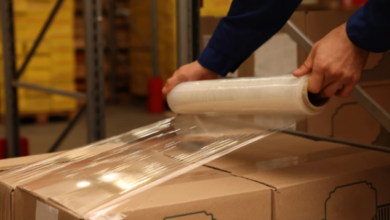Commercial vs. Business Litigation in Henderson: A Practical Guide

Understanding Commercial Litigation in Henderson
When you’re involved in a business dispute in Henderson, it’s easy to get lost in the details. Commercial litigation in Henderson covers a wide range of disagreements that can pop up between businesses or between a business and its customers, suppliers, or even employees. Think about things like broken contracts, arguments over partnerships, or claims of unfair business practices. The goal is always to resolve these issues efficiently and effectively.
Scope of Business Disputes
Business litigation in Henderson isn’t just about one type of problem. It can involve:
- Contract Breaches: When one party doesn’t hold up their end of a deal.
- Partnership Disagreements: Conflicts between business owners or partners.
- Business Torts: Wrongful acts that cause financial harm, like fraud or misrepresentation.
- Shareholder Issues: Disputes among those who own a piece of the company.
- Intellectual Property: Fights over patents, trademarks, or copyrights.
Key Elements of Commercial Litigation
Successfully handling these cases requires a clear approach. It’s about understanding the facts, the law, and what your client actually needs to achieve. This means looking at the case early on to figure out the best path forward. It’s not just about winning, but about finding a practical solution that makes sense for the business. Sometimes, this means settling, and other times it means going all the way to trial.
Navigating Complex Cases
Many commercial disputes can get complicated quickly. You might have multiple parties involved, a lot of documents to sort through, or laws from different places to consider. It’s important to have lawyers who can manage this complexity. They need to be able to break down the issues, focus on what really matters, and keep the case moving forward without unnecessary delays or costs. This often involves working closely with the court to manage the process smoothly.
Dealing with business disputes can be stressful. Having a clear plan and experienced legal help makes a big difference in getting through it.
Here’s a look at some common types of disputes:
| Dispute Type |
| Breach of Contract |
| Partnership Disputes |
| Business Torts |
| Shareholder Disputes |
| Intellectual Property |
Core Principles of Commercial Litigation
When you’re dealing with a business dispute in Henderson, it’s not just about winning; it’s about doing it smartly. The courts are really pushing for a more practical approach to these cases. Think of it like this: you wouldn’t use a sledgehammer to crack a nut, right? Same idea here. The goal is to get the best result without wasting time or money. This means lawyers have to be sharp from the get-go, figuring out the real issues and how to tackle them efficiently. It’s a shift from just throwing everything at the wall to see what sticks, towards a more focused strategy. Judges appreciate it, clients definitely appreciate it, and frankly, it just makes more sense.
Early Case Analysis
Getting a handle on your case right at the start is a big deal. It’s about looking at all the facts and the law involved and figuring out the strongest path forward. This isn’t just a quick glance; it’s a deep dive to understand what you’re up against and what your best options are. This early work helps shape everything that follows, from how you talk to the other side to what evidence you’ll need. It’s like planning a trip – you wouldn’t just hop in the car without a map, would you? You need to know where you’re going and how you’ll get there.
Focus on Pragmatism and Efficiency
This is where things get really practical. The courts want to see lawyers being sensible and avoiding unnecessary steps. That means cutting out the fluff and concentrating on what actually matters to resolve the dispute. It’s about being smart with resources. For instance, instead of filing a mountain of documents, you focus on the key ones that prove your point. This also means being open to talking with the other side about how to streamline the process. It’s a team effort, in a way, to make the whole thing less of a headache for everyone involved.
Strategic Use of Court Time
Court time is valuable, and judges want to see it used wisely. This principle means lawyers need to be prepared and make every minute count. When you’re in front of the judge, whether it’s for a quick hearing or a longer trial, you need to be organized and get straight to the point. It’s about presenting your case clearly and concisely, without rambling or getting bogged down in minor details. Think of it like giving a presentation – you have a set amount of time, and you need to deliver your key messages effectively. This approach helps keep cases moving and avoids unnecessary delays that can cost everyone more.
The emphasis is on doing what’s necessary for a fair outcome, not doing every single thing that’s possible. It’s about being smart with your approach and focusing on the core issues that will actually decide the case.
Pleading and Evidence in Henderson Cases
When you’re in the thick of a commercial dispute in Henderson, how you lay out your case and what evidence you bring to the table really matters. It’s not just about telling your side of the story; it’s about doing it in a way that the court can easily follow and that makes sense from a practical standpoint. The rules here are designed to keep things moving efficiently, cutting out the fluff so everyone knows exactly what they’re dealing with.
Primary Allegations in Pleadings
Think of your pleadings as the foundation of your entire case. The modern approach in Henderson focuses only on the ‘primary allegations.’ What does that mean? It means sticking to the core facts needed to prove your claim or defense. No need for long, winding stories that don’t directly support your legal points. The goal is to give the other side a clear picture of the case they need to answer, nothing more, nothing less. The page limit for these statements has been bumped up to 40 pages, which is a good thing if your case is genuinely complex, but remember, it’s a limit, not a target. If you need more space, you’ll have to convince the judge there’s a solid reason for it – just saying the case is complicated or worth a lot of money usually won’t cut it.
Evidence Assessment and Proof
It’s a good idea to start thinking about your evidence early on and keep thinking about it throughout the case. This helps make sure your trial prep is smooth and aligns with how the courts want things done. You’ll want to get a handle on:
- What are the real issues that are actually in dispute?
- How are you going to prove these facts? What kind of evidence will you need?
- How much paperwork are we talking about here? Will it be a mountain or a molehill?
- What witnesses, if any, will you need to call? Will you need experts?
Getting a handle on these questions, especially after the initial pleadings are filed, is super helpful for managing the case effectively. It also ties into how disclosure of documents will work.
The focus is on what’s reasonably necessary for a fair trial. This means not doing every single thing possible, but rather identifying and doing what’s sufficient to get the job done right.
Managing Documentary Disclosure
Disclosure is a big part of commercial litigation. The rules encourage parties to work together to figure out what documents are truly relevant. This often involves creating a ‘List of Common Ground and Issues’ early on. This list helps pinpoint exactly what facts are agreed upon and what still needs to be proven. It’s a tool that guides what documents you’ll need to exchange. The aim is to keep the disclosure process focused and avoid getting bogged down in endless requests for documents that don’t really matter. If your case is simpler, there are even more streamlined ways to handle disclosure, so it’s worth considering if that applies to you. Cooperation here can save a lot of time and hassle down the line.
The Role of Advocates in Commercial Disputes
When you’re caught up in a business dispute in Henderson, having the right legal help makes a huge difference. It’s not just about having someone in court; it’s about having someone who really gets how these cases work and can steer things effectively. The folks who handle these cases, the advocates, play a pretty big part in how smoothly things go.
Encouraging Junior Advocate Involvement
It’s becoming more common for the courts to see younger lawyers getting more involved in commercial cases. The idea is that these junior advocates, who are often closer to the day-to-day details of a case, can actually be really helpful when it comes to managing how the case proceeds. They might not be the ones arguing the whole trial, but for things like sorting out costs or dealing with specific parts of evidence, they can be a great asset. It’s a good way for them to learn and for the court to get efficient input.
- Junior lawyers can assist with case management issues.
- They are often well-placed to discuss specific evidence or costs.
- Their involvement can bring fresh perspectives to the case strategy.
Selecting the Right Counsel for CMCs
When you have a Case Management Conference (CMC), it’s not always necessary for the lawyer who will eventually run the trial to be there. For some CMCs, especially those dealing with budgets or specific disclosure documents, it makes more sense to have the junior lawyer who’s been handling those details present. They know the ins and outs better. For other, more complex CMCs, you might need senior counsel, but the key is picking the person who is best suited for that particular conference.
The goal is to have the most informed person representing your interests at each stage, making the process more efficient and effective.
Effective Advocacy for Case Management
Advocates need to be smart about how they use the court’s time. This means being prepared and focusing on what really matters for the case. Courts are looking for lawyers to be practical and only present information that’s needed to sort out the dispute. Cooperation between the parties, guided by their advocates, is a big part of this. It’s about working together to keep things moving forward without unnecessary delays or paperwork.
| Aspect of Case Management | Advocate’s Role |
| Early Case Analysis | Identify key issues and potential resolutions. |
| Disclosure | Focus on the necessary documents, not everything. |
| Court Time | Be prepared and concise in all submissions. |
| Costs | Manage budgets efficiently and reasonably. |
Procedural Updates in Commercial Litigation
The way commercial cases are handled in Henderson has seen some shifts lately, aiming to make things move along more smoothly and cost-effectively. It’s not just about following old rules; it’s about adapting to how business disputes actually play out today. Think of it as fine-tuning the engine so it runs better, not a complete overhaul.
Courts are pushing for more practical case management. This means that if parties sort out some issues right before a case management conference (CMC), they can submit an updated draft order. This is a good change because it acknowledges that negotiations often go down to the wire. It stops everyone from wasting time at the CMC discussing things that have already been agreed upon.
- Updated draft CMCs can be filed by 4 pm the day before.
- This allows for late negotiations to be reflected.
- It aims to prevent court time from being spent on already settled matters.
The goal here is to make sure the Court’s time is used efficiently, focusing on what still needs to be decided, rather than rehashing points the parties have already resolved amongst themselves.
There’s a new approach to how expert evidence on foreign law is handled. Instead of automatically bringing in experts for every little thing, the Court wants parties to think more carefully about what foreign law issues actually need proving and how best to do it. This could mean using documents or other methods, not just expert testimony. It’s about being smart with resources and only getting expert opinions when they’re truly necessary.
- Consider the specific issues of foreign law early on.
- Identify the sources of that law.
- Determine the extent to which proof is actually required.
To cut down on repetitive information presented at trial, especially lengthy timelines, parties are now encouraged to create an ‘agreed detailed narrative’. This document would lay out the undisputed facts in a clear, chronological order. The idea is that lawyers can then refer to this agreed narrative in their trial arguments, rather than having to re-explain all the basic, agreed-upon facts. It’s about focusing the trial on the points of disagreement.
- Prepare a document with uncontentious, relevant facts.
- Present facts chronologically or in logical chapters.
- Use this document to avoid lengthy recitations of agreed history in trial submissions.
The emphasis is on cooperation and presenting a clear, shared factual foundation to streamline the trial process.
Trial Preparation and Presentation
Getting ready for trial in Henderson can feel like a big undertaking, but breaking it down makes it much more manageable. It’s all about being organized and clear with the court. Think of it as setting the stage for a play; every prop, every line, needs to be in the right place.
Structured Reading Lists for Judges
Judges are busy people, and they appreciate it when you make their job easier. This means providing them with a clear roadmap of what they need to read before and during the trial. It’s not about overwhelming them with every single document you have. Instead, focus on the key pieces of information that directly support your case.
- Identify the core legal principles you’ll be arguing.
- Select only the most relevant documents that prove your points.
- Organize these documents logically, perhaps chronologically or by issue.
Providing a concise reading list helps the judge grasp the essence of your case quickly, allowing them to focus their attention on the contentious issues rather than searching for key information.
Time Estimates for Applications
When you file an application with the court, you need to give a realistic estimate of how long it will take. This isn’t just a guess; it’s a commitment. A half-day hearing, for example, is typically 2.5 hours, and that includes time for the judge to consider costs and potentially issue a ruling. If your arguments and the other side’s responses can’t fit within that timeframe, you need to ask for more time and explain why.
- Be realistic: Don’t underestimate how long arguments will take.
- Include all aspects: Factor in time for opening, closing, and any back-and-forth.
- Justify extensions: If you need more time, write a clear letter explaining the necessity.
Minimizing Paper Usage in Trials
Courts are moving towards paperless systems, and for good reason. It saves resources and makes managing documents much simpler. Unless the court specifically requests hard copies, you should aim to submit everything electronically. This means your trial bundles should only contain documents that will actually be referred to during the hearing. Including unnecessary papers can lead to questions from the judge and potential cost penalties if there’s no good reason for their inclusion.
- Go digital: Submit documents electronically whenever possible.
- Be selective: Only include documents that are essential for the trial.
- Avoid duplication: Don’t include documents that are already easily accessible or that don’t add value.
Urgent Matters and Court Procedures
Sometimes, things just can’t wait. In commercial litigation, you might find yourself needing the court’s attention outside of normal business hours. It’s not a common occurrence, but when it happens, you’ve got to be prepared. The rules are pretty strict about this, and for good reason. They don’t want people using these urgent procedures just because they didn’t plan ahead.
Justifying Urgent Applications
If you think your situation is urgent, you need to be able to explain why. This isn’t just about saying it’s urgent; you have to provide a certified explanation. This is separate from whether you can even make the application without the other side knowing about it first. It’s about showing the court that there’s a real, pressing need for immediate action.
Navigating Out-of-Hours Applications
Thinking about showing up at the court building after hours? Stop. Seriously, stop and ask yourself why. Can this really not wait until the next business day? There’s a specific form for these out-of-hours requests, and you’ll need to prove there’s extreme urgency. If you can’t show that, you might find yourself in a tricky spot called the Hamid jurisdiction. It’s not a good place to be. This is where the court deals with people who mess up procedures or don’t act properly. It’s not just for certain types of cases; it applies to anyone who abuses the out-of-hours system. The rules are clear now, so there are no excuses.
Adhering to Time Estimates
When you ask the court to do something, you have to give them an idea of how long you think it will take. For example, a half-day hearing actually means about two and a half hours, and that includes time for the judge to make a decision and talk about costs. So, if both sides can’t argue their case in about an hour and a half, it’s probably not a half-day matter. You can’t just stick it on a list of regular applications; you’ll need to ask for more time. If you need more time than the standard estimate, you have to write a letter explaining exactly why. It’s important to be realistic here; the court wants to use its time efficiently.
The court expects parties to be upfront about time needs and to justify any requests that go beyond the usual estimates. Being prepared and realistic saves everyone time and hassle.
Frequently Asked Questions
What kind of problems can commercial lawsuits handle?
Commercial lawsuits can deal with all sorts of disagreements that happen in the business world. This includes things like not following a contract, arguments between business partners, or when a group of people has the same complaint against a company. It also covers dishonest business actions and issues between people who own parts of a company.
Why is it important to look at a case early on?
Looking at a case right from the start helps lawyers figure out the best way to handle it. It’s like planning your moves in a game before you even start playing. This way, they can focus on what’s really important and avoid wasting time and money on things that don’t matter.
How do lawyers make sure court time isn’t wasted?
Lawyers try to be smart about how they use the court’s time. They focus on the main issues of the case and only bring up information that’s needed to solve the problem. They also work with the other side to agree on what facts are clear, which speeds things up.
What are ‘primary allegations’ in legal papers?
‘Primary allegations’ are the main facts needed to prove a case or a defense. They are like the building blocks of a legal argument. They need to be clear enough so the other side knows exactly what they’re up against and can prepare their response.
How are younger lawyers encouraged in commercial cases?
Courts like it when younger lawyers get involved in managing cases. They can be really helpful with figuring out how to handle the different steps of a lawsuit. It’s not always necessary for the main lawyer who will argue the case at the end to be at every meeting.
What’s new about using expert opinions on foreign laws?
Now, courts have more choices on how to handle expert opinions about laws from other countries. Instead of always needing a formal expert report, judges can decide the best way to understand the foreign law. This means lawyers need to think about this early on and discuss the options.





